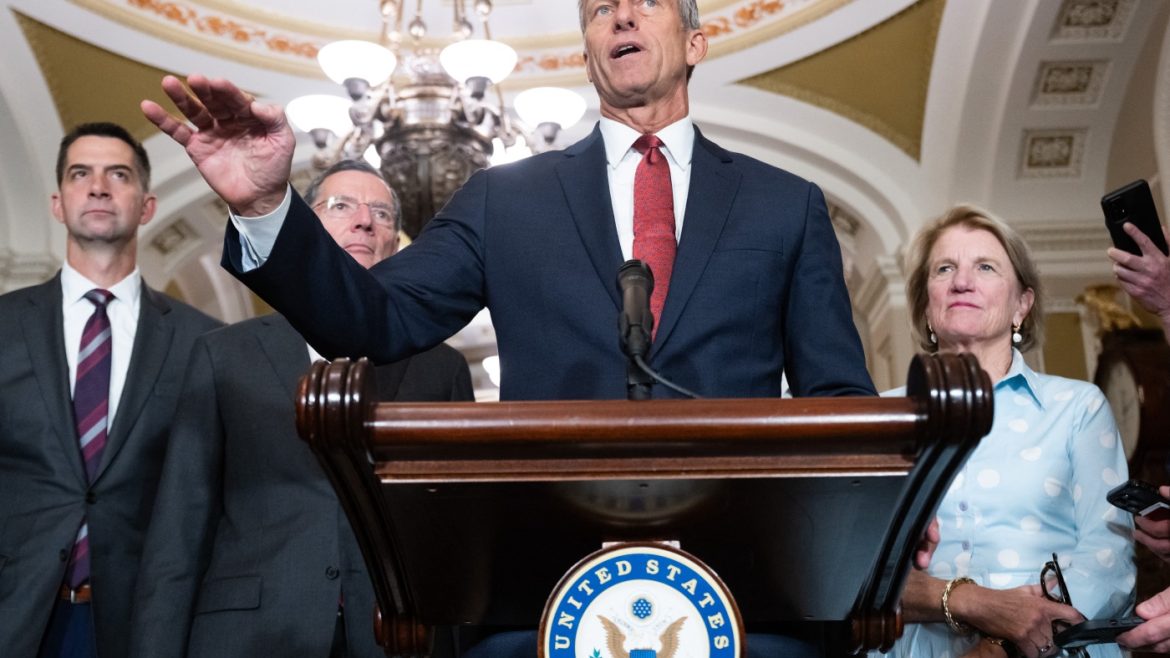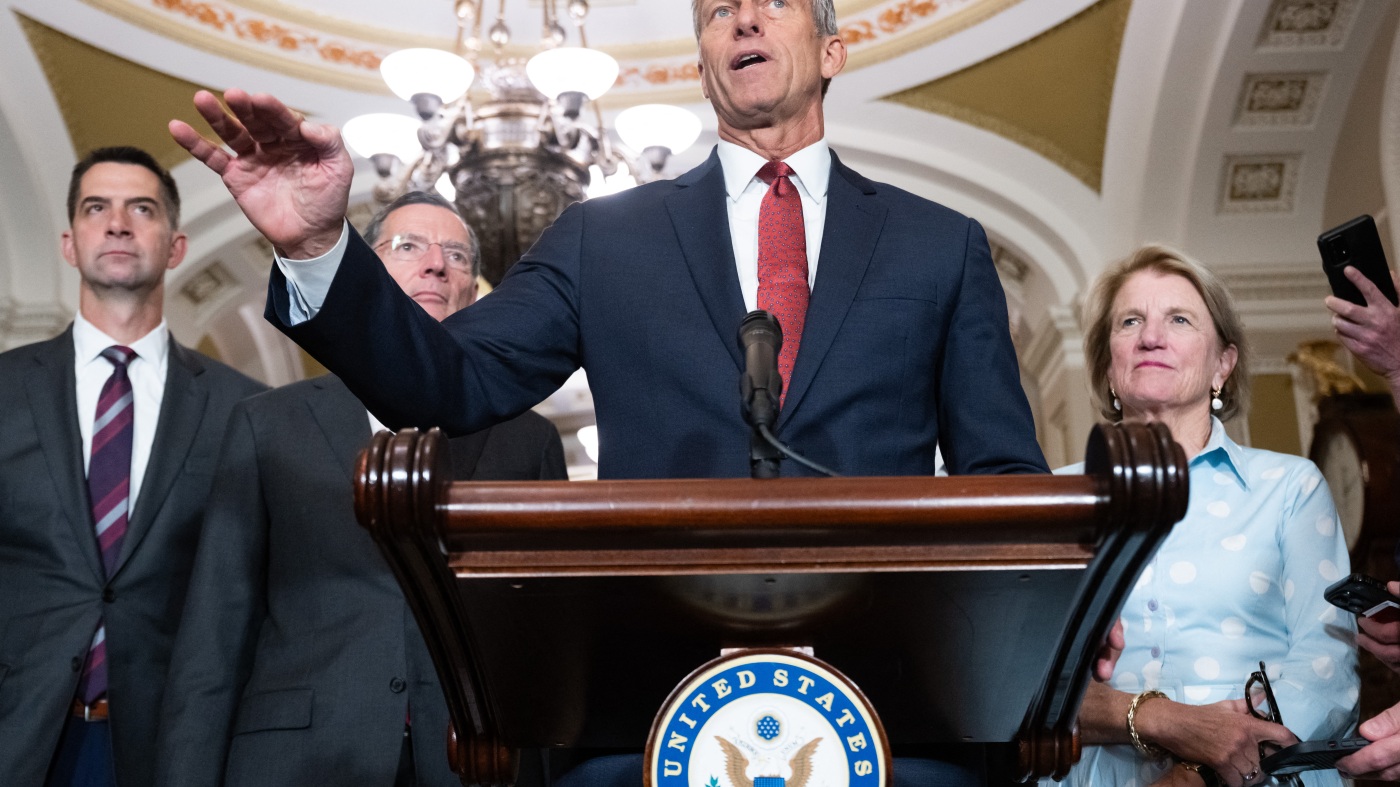The recent congressional debate over President Donald Trump’s proposed “big, beautiful bill” has brought to light a significant clash between legislative ambition and procedural constraints, particularly concerning Medicaid. At the heart of this conflict is the Senate parliamentarian, whose rulings on budget reconciliation rules have quietly but decisively shaped the contours of the GOP’s sweeping Medicaid overhaul. This article explores the implications of these rulings, the political and policy dynamics at play, and the potential consequences for millions of Americans who rely on Medicaid.
The Parliamentarian’s Role in Shaping Medicaid Policy
The Senate parliamentarian serves as a neutral arbiter, interpreting the complex rules of budget reconciliation. This process allows certain legislation to bypass the filibuster, requiring only a simple majority vote. However, the parliamentarian must ensure that all provisions in a reconciliation bill adhere to the Byrd Rule, which limits such bills to measures that have a direct impact on federal spending or revenue.
In the case of the GOP’s Medicaid proposal, the parliamentarian ruled that several key provisions did not meet these criteria. Specifically, modifications to the Federal Medical Assistance Percentage (FMAP) and limits on state provider taxes were deemed impermissible. These rulings have forced Senate Republicans to reconsider their approach, as the excluded provisions were central to the bill’s cost-cutting strategy.
The GOP’s Medicaid Overhaul: Ambitions and Consequences
The GOP’s Medicaid proposal represents a significant departure from the current system, with far-reaching implications for both state and federal governments, as well as for the millions of Americans who depend on the program. The key components of the proposal include:
Estimates suggest that these changes could result in more than 10 million Americans losing Medicaid coverage by 2034. The House version of the bill alone slashes around $600 billion from the program over ten years, setting the stage for contentious negotiations with the Senate.
The Parliamentarian’s Ruling: A Mixed Blessing for Republicans
For Senate Republicans, the parliamentarian’s ruling presents both challenges and opportunities. On one hand, it forces them to strip out or rewrite provisions that violate the Byrd Rule, potentially weakening the bill’s impact. On the other hand, by excluding some of the most contentious changes, the ruling may help mitigate political fallout for vulnerable incumbents facing reelection.
The rejected provisions include the FMAP reduction and new limits on provider taxes, both of which would have significantly altered how states pay for Medicaid. For millions of low-income Americans, this means at least a temporary reprieve from the most sweeping threats to their healthcare. However, the fight is far from over, as other provisions, such as work requirements, remain in play.
Work Requirements: A Contentious but Persistent Feature
Work requirements have long been a favorite of conservative policymakers, who argue that they promote self-sufficiency and reduce dependency on government assistance. However, critics point to evidence that such requirements often lead to coverage losses without clear evidence of boosting long-term employment among beneficiaries.
If implemented, work requirements could disproportionately affect vulnerable populations, such as those with disabilities, caregivers, or individuals living in areas with limited job opportunities. The potential consequences of these requirements highlight the broader debate over the role of government in providing a safety net for those in need.
The Political Crosscurrents: Balancing Policy and Politics
The internal dynamics of this debate extend beyond procedural wrangling. Speaker Mike Johnson has reportedly warned that the Senate’s push for deeper Medicaid cuts could cost House Republicans their majority in the next election cycle. Pressure from healthcare advocates, rural hospital groups, and nervous moderates in swing states is palpable, forcing Senate leaders to consider alternative approaches, such as pouring billions into a rural hospital fund.
Meanwhile, the House’s more aggressive version of the bill adds to the tension, putting the onus on Senate negotiators to thread a political and policy needle. The process reveals real divides within the GOP: fiscal hawks see an existential threat in unchecked entitlements, while centrists and rural-state Republicans fear the electoral cost of being branded as slashing healthcare for low-income people.
The Impact on the Public: Winners and Losers
Reducing Medicaid’s reach doesn’t just trim budgetary fat; it fundamentally alters health access for millions of Americans. The groups most at risk include:
– Low-income children and adults: Many of whom rely on Medicaid for essential healthcare services.
– People with disabilities: Who may face barriers to employment and thus be disproportionately affected by work requirements.
– Seniors in nursing homes: Relying on Medicaid for long-term care.
– Rural hospitals: Which often depend on Medicaid and uncompensated care funding to stay afloat.
If the House version’s $600 billion in cuts were adopted and work requirements rigidly enforced, it’s estimated that nearly 11 million Americans would lose their coverage. This would have profound consequences for public health systems, child wellness, and public finances, especially in expansion states.
The Broader Legislative Picture
Medicaid changes are not happening in a vacuum. The “big, beautiful bill” also proposes changes to programs like SNAP and includes controversial tax cuts benefiting higher-income households. Analysts point out that the net effect is a “reverse Robin Hood” redistribution: resources flow upward, while social safety nets for the most vulnerable are trimmed.
Senate Democrats and some centrist Republicans are prepared to mount furious opposition, and the parliamentarian’s ruling has emboldened them. Each rejected provision reduces the bill’s impact—both fiscally and socially—and sets up a high-stakes game of legislative ping-pong as each chamber seeks to preserve its priorities.
Concluding Thoughts: The High Cost of Legislative Ambition
The drama over Medicaid in the GOP’s “big, beautiful bill” offers a masterclass in how policy ambitions crash into procedural reality. The parliamentarian’s ruling doesn’t make for cable news fireworks, but it wields quiet, far-reaching power—forcing lawmakers to reckon with the rules, not just their desires.
As negotiations grind on, the bill’s final shape will signal not only the immediate fate of Medicaid but also the boundaries of legislative possibility in a polarized Congress. For millions of Americans, the stakes aren’t abstract: they echo in doctor’s offices, hospital wards, and state budgets. Whether this bill delivers sweeping change or simply more gridlock remains to be seen—what’s certain is that, in the halls of Congress, procedure sometimes speaks louder than politics.


